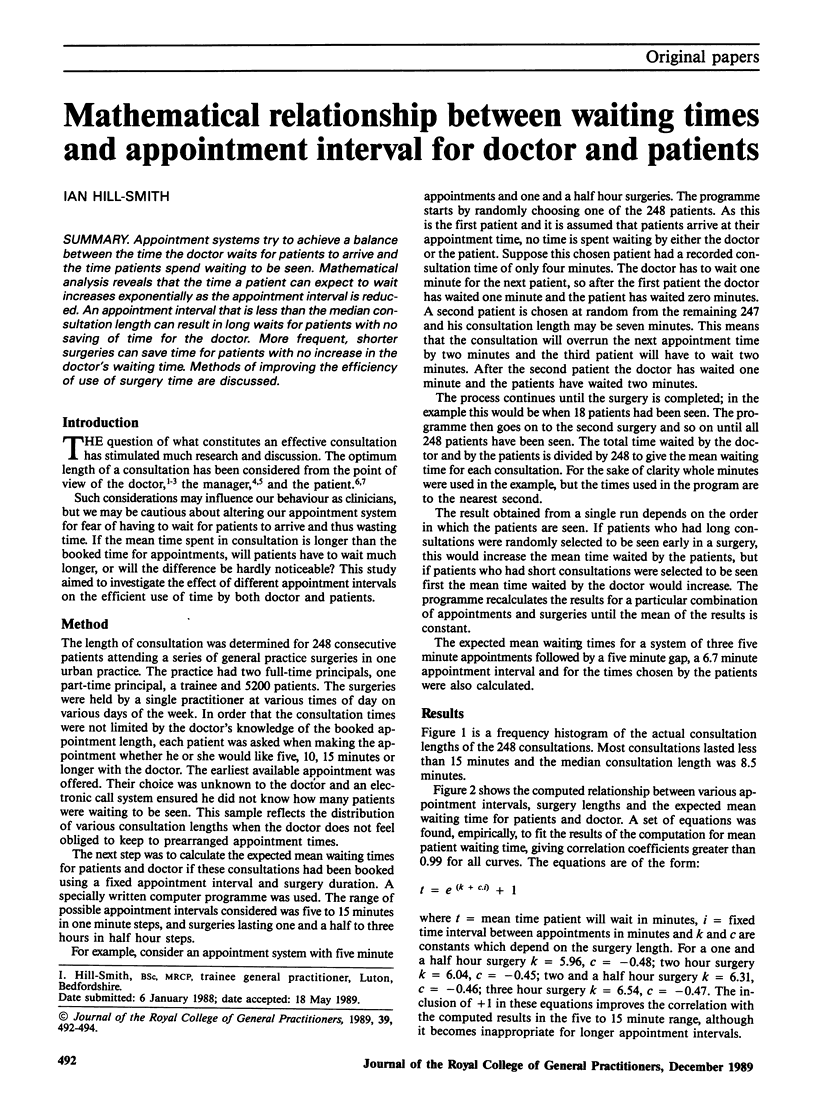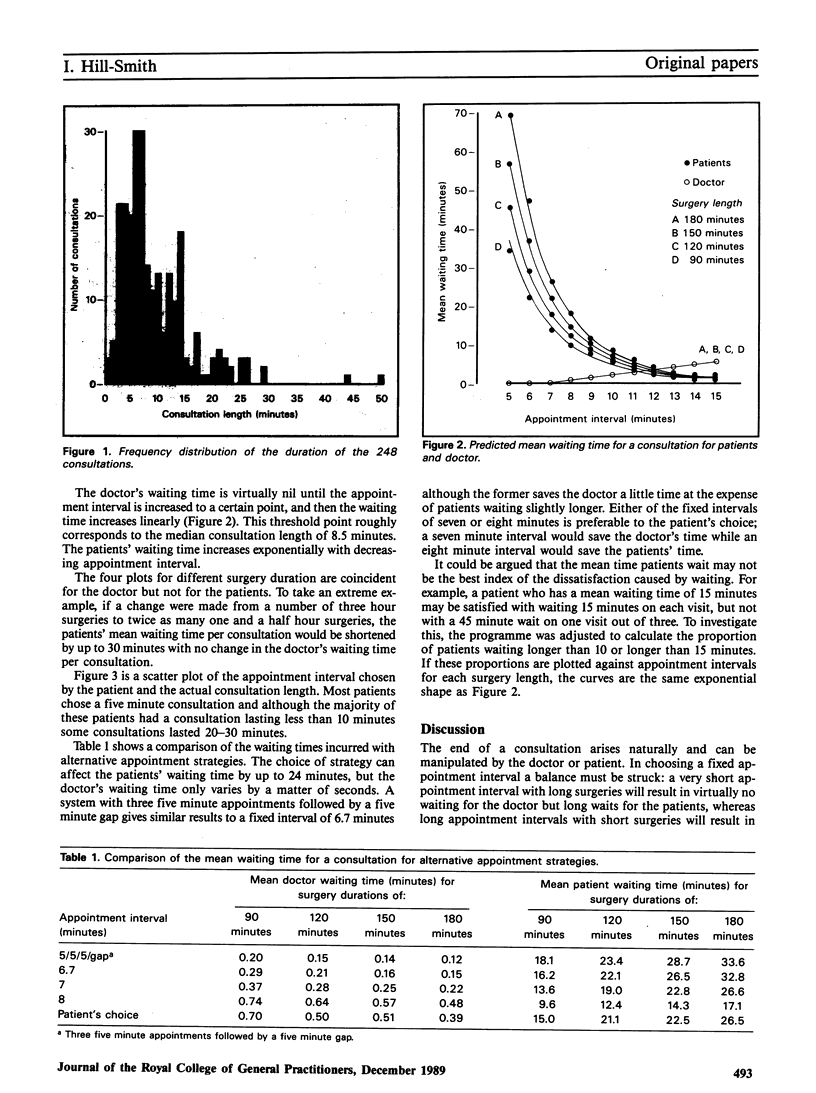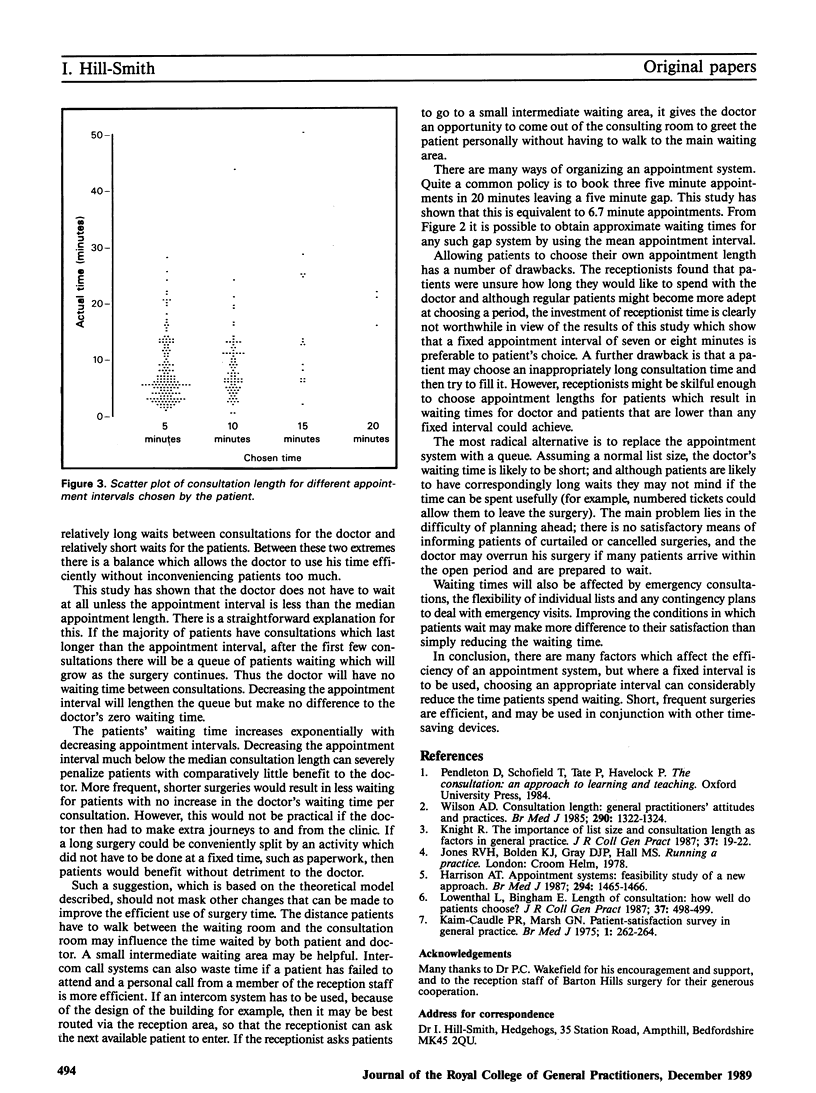Abstract
Appointment systems try to achieve a balance between the time the doctor waits for patients to arrive and the time patients spend waiting to be seen. Mathematical analysis reveals that the time a patient can expect to wait increases exponentially as the appointment interval is reduced. An appointment interval that is less than the median consultation length can result in long waits for patients with no saving of time for the doctor. More frequent, shorter surgeries can save time for patients with no increase in the doctor's waiting time. Methods of improving the efficiency of use of surgery time are discussed.
Full text
PDF


Images in this article
Selected References
These references are in PubMed. This may not be the complete list of references from this article.
- Harrison A. T. Appointment systems: feasibility study of a new approach. Br Med J (Clin Res Ed) 1987 Jun 6;294(6585):1465–1466. doi: 10.1136/bmj.294.6585.1465. [DOI] [PMC free article] [PubMed] [Google Scholar]
- Kaim-Caudle P. R., Marsh G. N. Patient-satisfaction survey in general practice. Br Med J. 1975 Feb 1;1(5952):262–264. doi: 10.1136/bmj.1.5952.262. [DOI] [PMC free article] [PubMed] [Google Scholar]
- Knight R. The importance of list size and consultation length as factors in general practice. J R Coll Gen Pract. 1987 Jan;37(294):19–22. [PMC free article] [PubMed] [Google Scholar]
- Lowenthal L., Bingham E. Length of consultation: how well do patient's choose? J R Coll Gen Pract. 1987 Nov;37(304):498–499. [PMC free article] [PubMed] [Google Scholar]
- Wilson A. D. Consultation length: general practitioners' attitudes and practices. Br Med J (Clin Res Ed) 1985 May 4;290(6478):1322–1324. doi: 10.1136/bmj.290.6478.1322. [DOI] [PMC free article] [PubMed] [Google Scholar]



